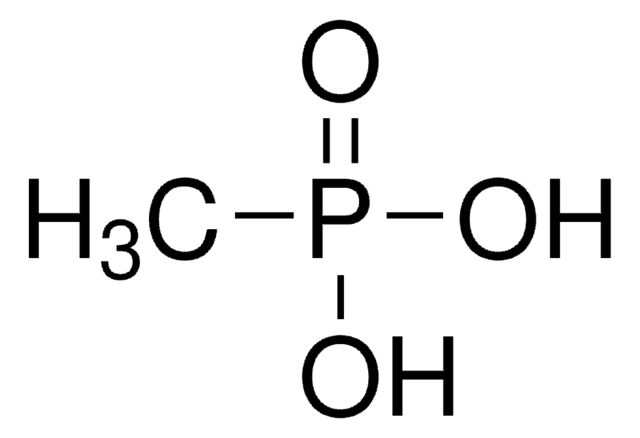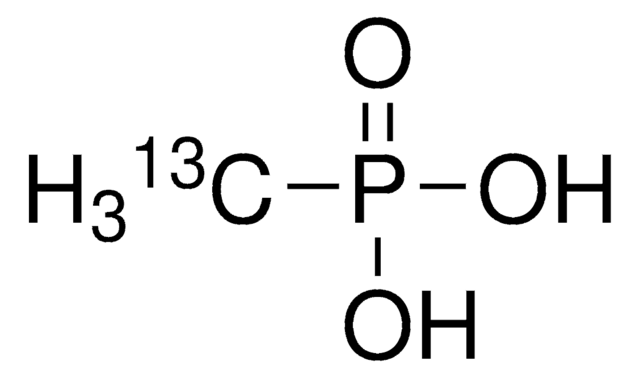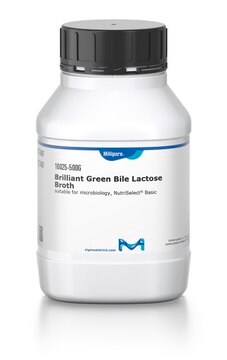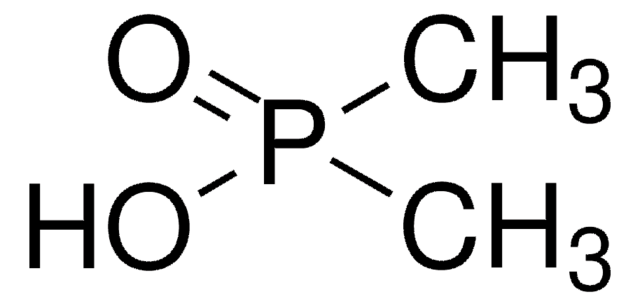91957
Monosodium methylphosphonate
99.0-101.0% (T)
Sinónimos:
Methanephosphonic acid monosodium salt, Methylphosphonic acid monosodium salt
About This Item
Productos recomendados
grado
for analytical purposes
Nivel de calidad
Ensayo
99.0-101.0% (T)
Formulario
crystals
concentración
18.5-20.5% Na
pérdida
≤2.0% loss on drying
pH
4.5-5.1
solubilidad
water: 3.54 g/30 mL, colorless
trazas de catión
Al: ≤5 mg/kg
Ba: ≤5 mg/kg
Bi: ≤5 mg/kg
Ca: ≤50 mg/kg
Cd: ≤5 mg/kg
Co: ≤5 mg/kg
Cr: ≤5 mg/kg
Cu: ≤5 mg/kg
Fe: ≤5 mg/kg
K: ≤50 mg/kg
Li: ≤5 mg/kg
Mg: ≤5 mg/kg
Mn: ≤5 mg/kg
Mo: ≤5 mg/kg
Ni: ≤5 mg/kg
Pb: ≤5 mg/kg
Sr: ≤5 mg/kg
Zn: ≤5 mg/kg
Absorción UV
λ: 260 nm Amax: ≤0.2
λ: 280 nm Amax: ≤0.07
idoneidad
no residue for filter test
cadena SMILES
O=P(C)(O[Na])O
InChI
1S/CH5O3P.Na/c1-5(2,3)4;/h1H3,(H2,2,3,4);/q;+1/p-1
Clave InChI
CZVWTNTXBUVAFR-UHFFFAOYSA-M
Aplicación
Palabra de señalización
Danger
Frases de peligro
Clasificaciones de peligro
Acute Tox. 4 Oral - Eye Dam. 1 - Skin Corr. 1B
Código de clase de almacenamiento
8A - Combustible corrosive hazardous materials
Clase de riesgo para el agua (WGK)
WGK 3
Punto de inflamabilidad (°F)
Not applicable
Punto de inflamabilidad (°C)
Not applicable
Elija entre una de las versiones más recientes:
Certificados de análisis (COA)
¿No ve la versión correcta?
Si necesita una versión concreta, puede buscar un certificado específico por el número de lote.
¿Ya tiene este producto?
Encuentre la documentación para los productos que ha comprado recientemente en la Biblioteca de documentos.
Los clientes también vieron
Nuestro equipo de científicos tiene experiencia en todas las áreas de investigación: Ciencias de la vida, Ciencia de los materiales, Síntesis química, Cromatografía, Analítica y muchas otras.
Póngase en contacto con el Servicio técnico












